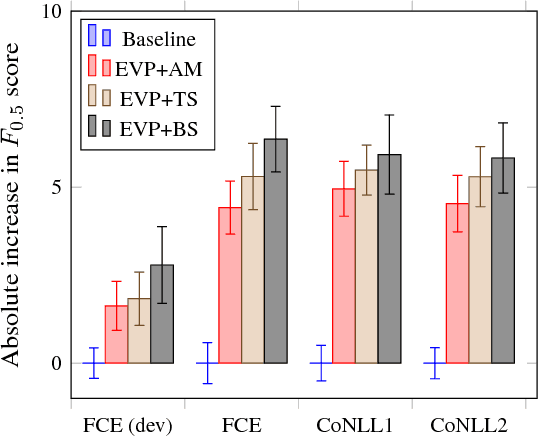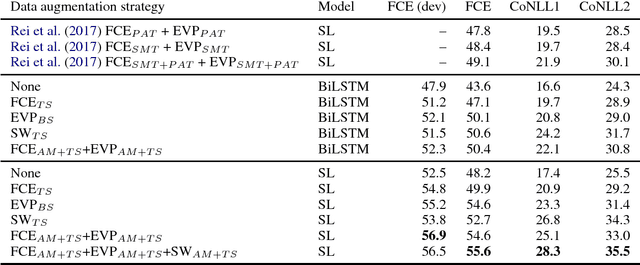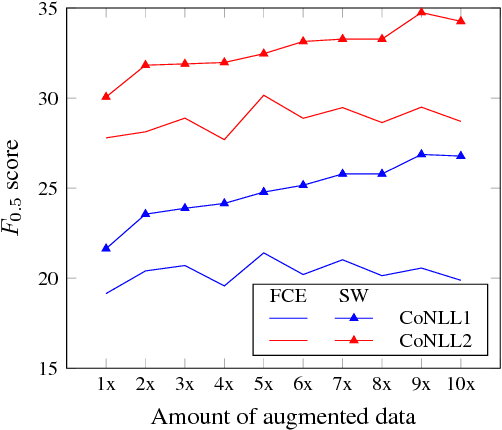Wronging a Right: Generating Better Errors to Improve Grammatical Error Detection
Paper and Code
Sep 26, 2018



Grammatical error correction, like other machine learning tasks, greatly benefits from large quantities of high quality training data, which is typically expensive to produce. While writing a program to automatically generate realistic grammatical errors would be difficult, one could learn the distribution of naturallyoccurring errors and attempt to introduce them into other datasets. Initial work on inducing errors in this way using statistical machine translation has shown promise; we investigate cheaply constructing synthetic samples, given a small corpus of human-annotated data, using an off-the-rack attentive sequence-to-sequence model and a straight-forward post-processing procedure. Our approach yields error-filled artificial data that helps a vanilla bi-directional LSTM to outperform the previous state of the art at grammatical error detection, and a previously introduced model to gain further improvements of over 5% $F_{0.5}$ score. When attempting to determine if a given sentence is synthetic, a human annotator at best achieves 39.39 $F_1$ score, indicating that our model generates mostly human-like instances.
 Add to Chrome
Add to Chrome Add to Firefox
Add to Firefox Add to Edge
Add to Edge